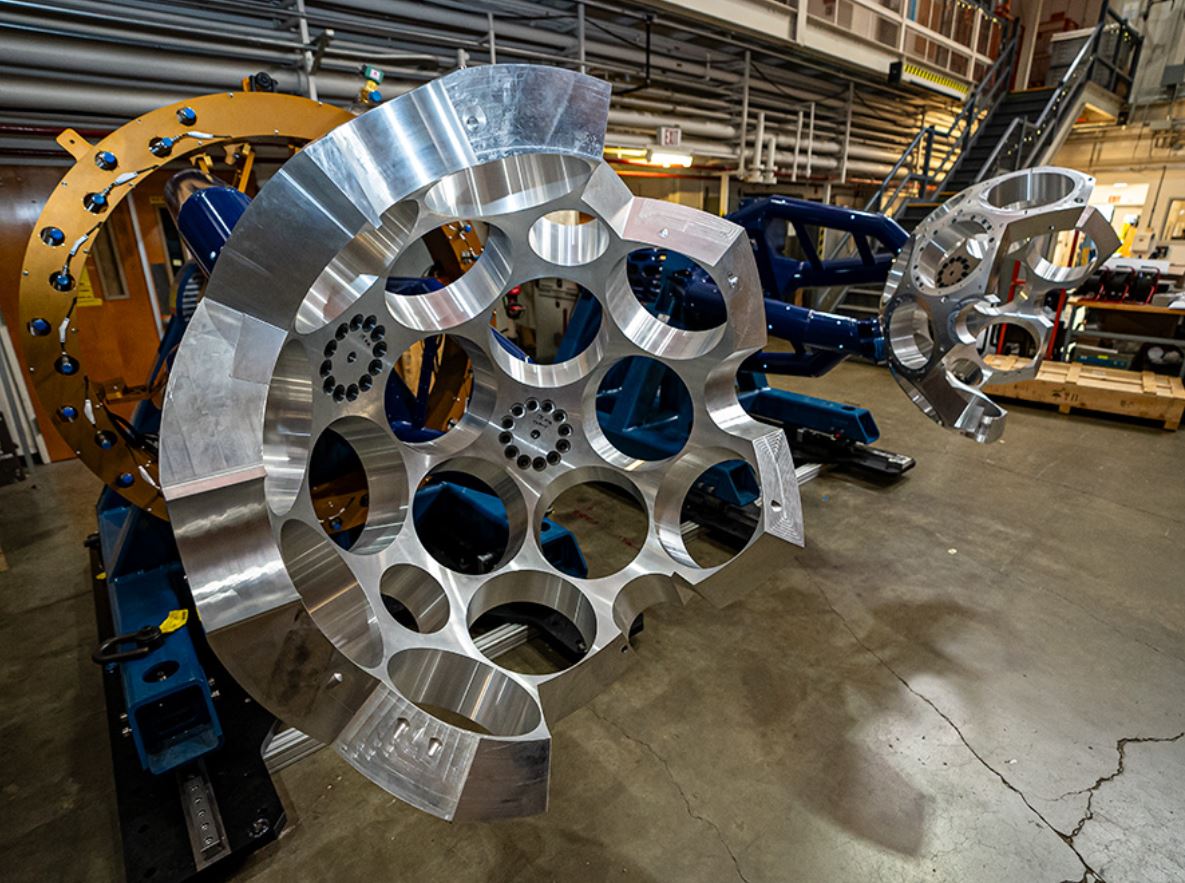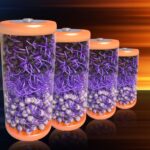 Developed at the U.S. Department of Energy’s Lawrence Berkeley National Laboratory, GRETA (the Gamma-Ray Energy Tracking Array) is ready to upgrade our understanding of atomic nuclei. Now that its construction is complete, the detector is headed to Michigan State University’s Facility for Rare Isotope Beams (FRIB) for its final set-up, offering researchers a sophisticated tool to study the processes by which stars forge heavy elements and test the limits of nuclear stability.
Developed at the U.S. Department of Energy’s Lawrence Berkeley National Laboratory, GRETA (the Gamma-Ray Energy Tracking Array) is ready to upgrade our understanding of atomic nuclei. Now that its construction is complete, the detector is headed to Michigan State University’s Facility for Rare Isotope Beams (FRIB) for its final set-up, offering researchers a sophisticated tool to study the processes by which stars forge heavy elements and test the limits of nuclear stability.
Using high-purity germanium crystals, GRETA carefully tracks gamma rays produced in nuclear decays. If you’ve ever struggled with catching faint signals in a noisy experiment, you’ll appreciate this detector’s precision. Project director Paul Fallon explained that the goal was to build a system capable of uncovering even the most subtle nuclear structures, potentially delivering up to 100 times the sensitivity of previous instruments.
The detector’s assembly brings together germanium modules, advanced electronics, and a robust mechanical frame. Thanks to contributions from labs like Argonne and Oak Ridge, GRETA will soon support experiments where particle beams strike targets, capturing unique isotopic signatures. As deputy project director Heather Crawford puts it, the detector acts like a very powerful microscope, revealing the distinctive fingerprint of each isotope.
Beyond probing rare isotopes and exploring nuclear drip lines, GRETA will also investigate unusual, pear-shaped nuclei in the hope of understanding why matter dominates antimatter. An evolution of the earlier GRETINA project, GRETA now boasts 30 detector modules and cutting-edge electronics that can process nearly half a million gamma-ray interactions per second. The upcoming DELERIA data system will even link experimental results to supercomputing resources, speeding up analysis significantly.
As GRETA heads to FRIB—and later to Argonne National Laboratory—it promises not only to enhance the depth and speed of nuclear science investigations but also to boost our overall understanding of the very building blocks of matter.








